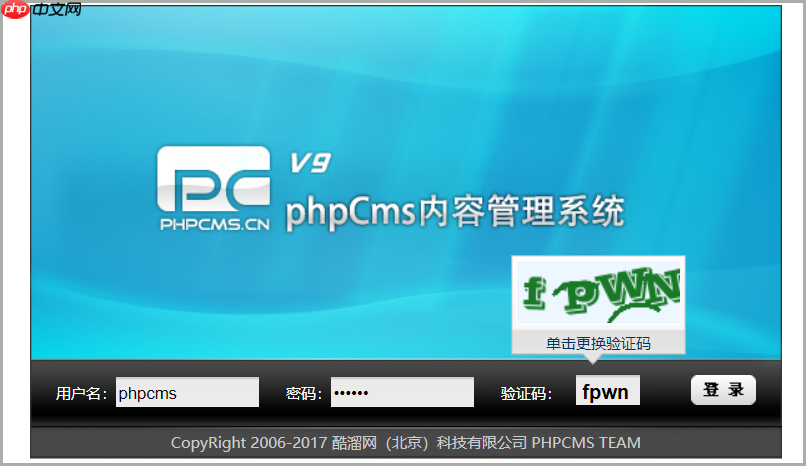phpcms適合搭建餐飲美食網(wǎng)站并實現(xiàn)菜品推薦與預(yù)訂系統(tǒng)。1)利用數(shù)據(jù)庫和自定義模塊實現(xiàn)智能推薦,通過算法推送用戶感興趣的菜品。2)使用表單和訂單管理功能實現(xiàn)預(yù)訂流程,用戶可選擇菜品并提交訂單。3)注意用戶體驗、數(shù)據(jù)安全和系統(tǒng)擴(kuò)展性,優(yōu)化性能以提升用戶滿意度和系統(tǒng)穩(wěn)定性。

在探索如何利用phpcms搭建一個餐飲美食網(wǎng)站的菜品推薦與預(yù)訂系統(tǒng)時,我們需要考慮的不僅是技術(shù)實現(xiàn),還有用戶體驗、功能設(shè)計以及系統(tǒng)的可擴(kuò)展性。讓我們從幾個關(guān)鍵方面展開討論。
首先要明確的是,PHPCMS是一個功能強大且靈活的開源內(nèi)容管理系統(tǒng),適合搭建各種類型的網(wǎng)站,包括餐飲美食網(wǎng)站。它提供了豐富的模塊和插件,可以幫助我們快速搭建一個功能齊全的網(wǎng)站。
在菜品推薦方面,我們可以利用PHPCMS的數(shù)據(jù)庫功能和自定義模塊來實現(xiàn)智能推薦系統(tǒng)。通過分析用戶的瀏覽歷史和訂單記錄,我們可以使用算法來推送用戶可能感興趣的菜品。這不僅提高了用戶的滿意度,也增加了網(wǎng)站的粘性和訂單量。
立即學(xué)習(xí)“PHP免費學(xué)習(xí)筆記(深入)”;
<?php // 菜品推薦算法 function recommendDishes($userId) { $userHistory = getUserHistory($userId); $popularDishes = getPopularDishes(); $recommended = array(); foreach ($userHistory as $dish) { $similarDishes = getSimilarDishes($dish); $recommended = array_merge($recommended, $similarDishes); } $recommended = array_unique($recommended); $recommended = array_merge($recommended, $popularDishes); return array_slice($recommended, 0, 10); } function getUserHistory($userId) { // 從數(shù)據(jù)庫中獲取用戶歷史訂單 } function getPopularDishes() { // 從數(shù)據(jù)庫中獲取熱門菜品 } function getSimilarDishes($dish) { // 根據(jù)菜品特征獲取相似菜品 } ?>
關(guān)于菜品預(yù)訂系統(tǒng),PHPCMS提供了強大的表單和訂單管理功能,我們可以利用這些功能來實現(xiàn)預(yù)訂流程。用戶可以在網(wǎng)站上選擇菜品、指定時間和數(shù)量,然后提交訂單。系統(tǒng)會自動生成訂單號,并發(fā)送確認(rèn)郵件給用戶。
<?php // 菜品預(yù)訂流程 class Reservation { private $userId; private $dishIds; private $reservationTime; private $quantity; public function __construct($userId, $dishIds, $reservationTime, $quantity) { $this->userId = $userId; $this->dishIds = $dishIds; $this->reservationTime = $reservationTime; $this->quantity = $quantity; } public function submit() { $orderId = generateOrderId(); $success = saveOrder($this->userId, $this->dishIds, $this->reservationTime, $this->quantity, $orderId); if ($success) { sendConfirmationEmail($this->userId, $orderId); return $orderId; } else { return false; } } } function generateOrderId() { // 生成唯一的訂單號 } function saveOrder($userId, $dishIds, $reservationTime, $quantity, $orderId) { // 保存訂單到數(shù)據(jù)庫 } function sendConfirmationEmail($userId, $orderId) { // 發(fā)送確認(rèn)郵件 } ?>
在實際開發(fā)過程中,我們需要注意以下幾點:
- 用戶體驗:確保網(wǎng)站的導(dǎo)航清晰,用戶可以輕松找到菜品推薦和預(yù)訂功能。同時,頁面加載速度和響應(yīng)時間也是關(guān)鍵因素。
- 數(shù)據(jù)安全:處理用戶的個人信息和訂單數(shù)據(jù)時,必須遵循數(shù)據(jù)保護(hù)法規(guī),確保數(shù)據(jù)的安全性和隱私性。
- 系統(tǒng)擴(kuò)展性:隨著網(wǎng)站的增長,我們需要考慮系統(tǒng)的可擴(kuò)展性,確保能夠處理更多的用戶和訂單。PHPCMS的模塊化設(shè)計在這方面提供了很大的便利。
在性能優(yōu)化方面,我們可以考慮使用緩存機(jī)制來提高頁面的加載速度,特別是對于菜品推薦和預(yù)訂功能,這些功能通常需要頻繁訪問數(shù)據(jù)庫。同時,我們可以優(yōu)化數(shù)據(jù)庫查詢,確保在高并發(fā)情況下系統(tǒng)仍然能夠穩(wěn)定運行。
<?php // 使用緩存優(yōu)化菜品推薦 function getCachedRecommendedDishes($userId) { $cacheKey = 'recommended_dishes_' . $userId; $cachedData = getCache($cacheKey); if ($cachedData) { return $cachedData; } else { $recommendedDishes = recommendDishes($userId); setCache($cacheKey, $recommendedDishes, 3600); // 緩存1小時 return $recommendedDishes; } } function getCache($key) { // 從緩存系統(tǒng)中獲取數(shù)據(jù) } function setCache($key, $data, $expiration) { // 設(shè)置緩存數(shù)據(jù) } ?>
通過這些技術(shù)和策略,我們可以搭建一個功能強大且用戶友好的餐飲美食網(wǎng)站,提供優(yōu)質(zhì)的菜品推薦和預(yù)訂服務(wù)。希望這些分享能對你有所幫助,祝你的項目順利進(jìn)行!


















.png)
